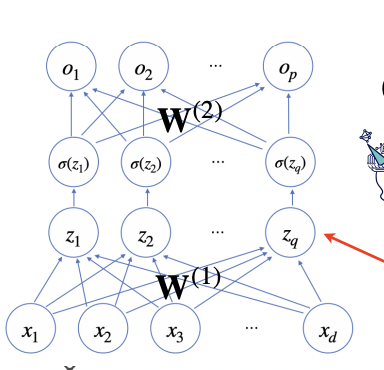How Deep Learning Learns
What is a Neural Network?
- Studying neural networks means studying nonlinear models, which are essentially combinations of linear models and nonlinear functions.
- To understand neural networks, you must first understand the concepts of softmax and activation functions.
- Understanding how linear models work is key to understanding how to build and train nonlinear models.
- Before diving in, let’s define matrices in the context of deep learning. There are two main types:
- Data matrices: collections of input data
- Transformation matrices: used to map data into different dimensions or spaces

- In the image above:
X is the data matrixW is the weight matrixb is the bias matrix (each row has the same value)- After applying operations, the output vector’s dimension changes from d to p.
- This essentially means we build p linear models from d input features, allowing us to define a more complex function using p latent variables.
Softmax Operation
- The softmax function converts the model’s output into probabilities.
- It’s used in classification tasks to determine whether an input belongs to class
k.
- In short, classification problems = linear model + softmax function.
- But why was softmax introduced?
- For simple inference, one-hot vectors might suffice.
- However, in general, outputs from linear models aren’t valid probability vectors. Softmax transforms them into proper probability distributions for classification.
Activation Function
- Why do we need activation functions?
- They serve as a trick to enable modeling of nonlinear functions.
- Activation functions are nonlinear functions applied to each element of the linear model’s output.
- They are applied element-wise, not to the entire vector at once.
- Inputs are typically real numbers (not vectors), and the outputs are also real numbers.
- Using activation functions, we can convert the output of a linear model into a nonlinear model.
- The most widely used activation function today is ReLU.

How Does Deep Learning Learn?
- Simply put, it involves repeatedly applying linear models and activation functions.
- Let’s understand this by looking at a two-layer neural network:

- For each element
z in the matrix, apply an activation function:
$\displaystyle\sum_{n=1} ^{\infty} z$
- Why not stop at two layers?
- The more layers you stack, the fewer neurons are needed to approximate the target function — making the model more efficient.
- Forward propagation:
- Takes input
x and repeatedly applies linear models and composition functions.
- Backward propagation:
- Applies gradient descent. You need to compute gradients of weights at each layer.
- Use the derivatives of parameters at each layer to apply gradient descent to all elements in the weight matrices.
- In deep learning, each layer is computed sequentially, and you can’t skip more than one layer during the computation.
- First, compute gradients at the top layer, then proceed layer by layer downward.



Leave a comment